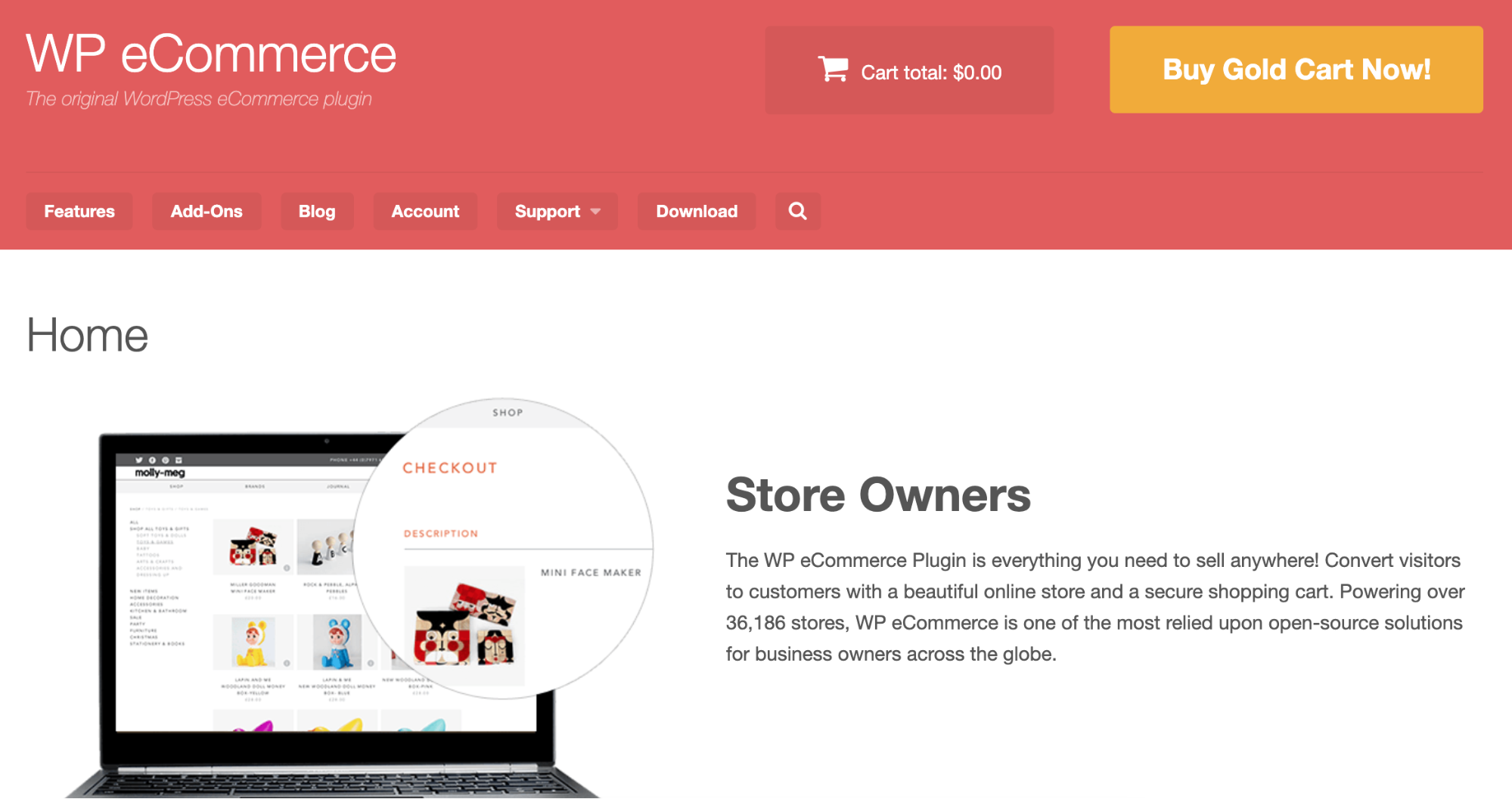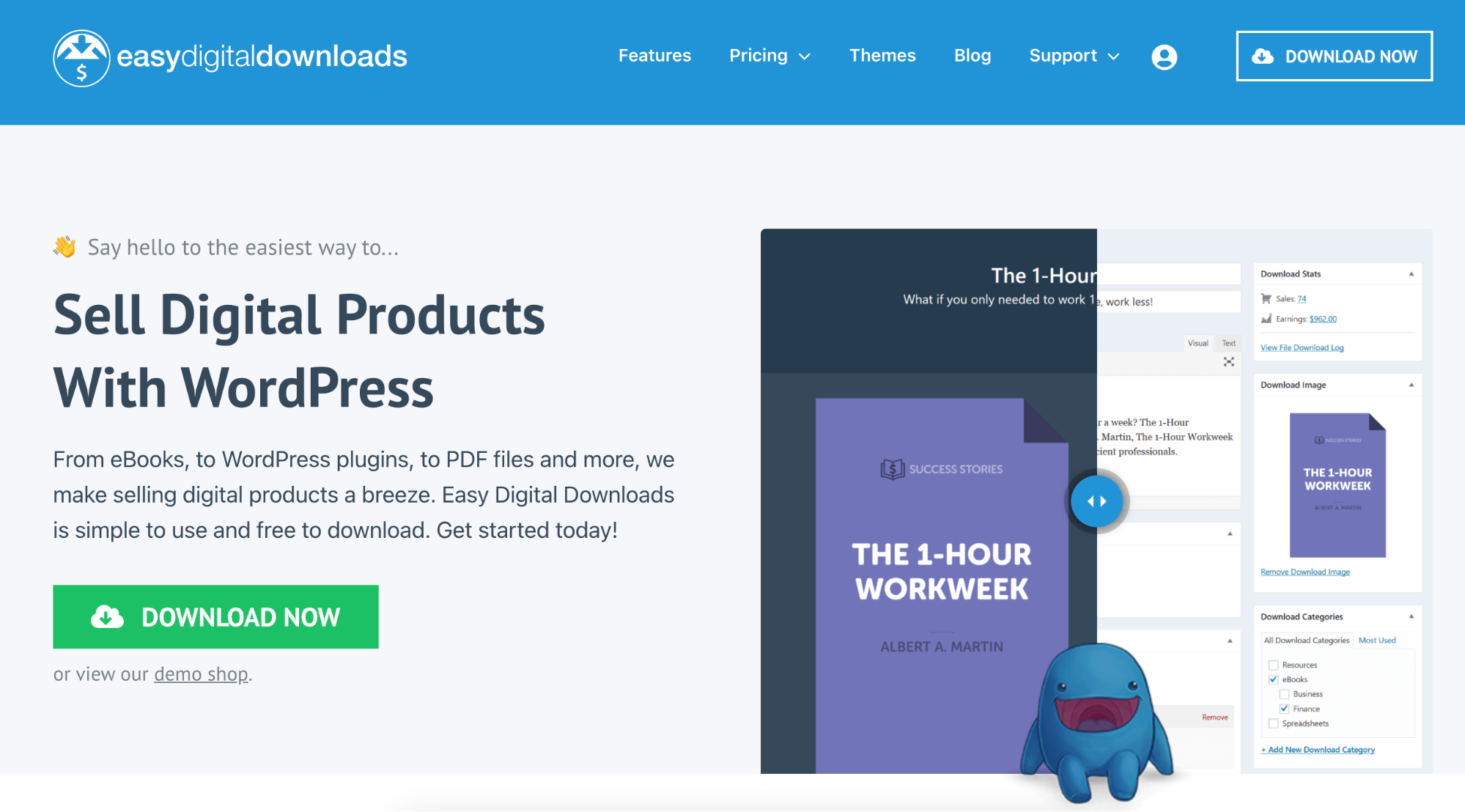WooCommerce Not Working Out? Here Are 8 Alternatives to Manage Your Online Store

One of the first steps involved in setting up your online business is building a website. And there are many website builders you can use to DIY the whole thing.
About 40% of websites are built on WordPress, an open-source content management system. Standard WordPress websites lack native ecommerce features out of the box; most business owners need the ability to list products, accept payments, track inventory, and fulfill orders, which a default WordPress installation can’t do. This is where WooCommerce, an ecommerce plug-in for WordPress built by Automattic, comes into play.
However, WooCommerce lacks the seamless integrations to help you manage and grow your business. WooCommerce sites feel stitched together and clunky. You're left to figure out web hosting on your own, and the disjointed backend means your various tools are rarely in sync, not to mention other challenges. A WooCommerce alternative like Shopify makes it easier to manage every aspect of your business from a single control center.
The list of WooCommerce alternatives below, which includes both plug-ins for WordPress and new platforms entirely, offers different features and options that may be better-suited for your business.
Table of Contents
A quick introduction to WooCommerce
- Price: Free (requires hosting)
- Mobile app features: Create products, process orders, view analytics; available for iOS and Android
- Point of sale (POS): Yes. Compatible with Square, FOOsales, and Lightspeed (costs vary)
- Website hosting: Available through third parties for an additional fee

WordPress started primarily as a content management system for blogs and simple text-based websites but has since added several ecommerce plugins—one of them being WooCommerce.
One benefit of WooCommerce is that you can largely customize your site the way you want. But the downside is that this gets complicated and clunky, so rather than working on your business, you have to fiddle with your website. A stitched together WooCommerce site with a bunch of disparate tools requires lots of maintenance. Integrations break, and you have to troubleshoot every issue. Downtime is costly, especially in ecommerce.
Plus, using WooCommerce requires you use third-party web hosting. This setup adds unnecessary cost and complexity to your site. And without PCI compliance, your store is more at risk.
Get started: Make money from your WordPress site without migrating to a new platform with the Shopify Buy Button. You can embed the button and start selling on your blog from only $9/month.
Ultimately, WooCommerce is a quick solution for WordPress users. If you run a business selling products you should use a commerce platform, not a general website tool with commerce features tacked on.
WooCommerce alternatives for your online store
If you’re not tied to WordPress, there are many dedicated ecommerce site builders you can use instead of WooCommerce. These tools typically come with everything you need to start selling online, as well as optional plugins, apps, and add-ons you can use to further customize and build out your store.
Shopify
- Price: Basic Shopify: $39/month; Shopify: $105/month; Advanced Shopify: $399/month
- Integrated sales channels: Facebook, Instagram, Google, Walmart Marketplace, eBay, and Amazon
- Mobile app features: Suite of mobile tools to fully manage your online business
- POS: Yes
- Website hosting: Included in every plan

Shopify is one of the best ecommerce platforms to help you manage every aspect of your online business. It’s easy to get started and simple to manage—you can go underneath the hood if you want to, but you can also maintain, customize, and scale your store without learning to code.
Shopify sites have superfast load times and the best-performing checkout on the web. You don’t need a managed host or some third-party checkout—Shopify’s built-in tools are world class.
You can also sell pretty much everywhere. With Shopify’s omnichannel tools, you can sell wherever your customers are—be it online or in person. And we’re constantly looking for new ways to help merchants bring their products to new markets. Check out our recent launch of the TikTok sales channel and our Shop Pay + Facebook/Instagram partnership, for instance—no plugins required.
Shopify also has tons of resources for new and established entrepreneurs alike. An active community forum, ample support documentation, free learning resources, are all waiting to help you through each stage of your business. If you can’t DIY something, you can even hire a trusted Shopify Expert.
And as you grow, you can leverage more tools and resources like Shopify POS, local delivery, and Shopify Capital. Shopify is essentially a WooCommerce alternative you can use when you’re just starting out and through every stage of growth. Read our Shopify vs. WooCommerce comparison to see a more detailed breakdown.
Make the switch: Find out how to migrate your WooCommerce site to Shopify using the Store Importer.
BigCommerce
- Price: Standard: $29.95/month; Plus: $79.95/month, or $71.95/month when paid annually; Pro: $299.95/month, or $269.96/month when paid annually; Enterprise custom pricing
- Integrated sales channels: Google Shopping, Facebook, price comparison engines, eBay, Amazon, Walmart, Etsy, and Instagram
- Mobile app features: View analytics, update orders, manage inventory and products, and search for customers; some features are Android-only
- POS: Yes
- Website hosting: Included in every plan

BigCommerce is a powerful WooCommerce alternative that has everything you need to launch a massive online store. The platform caters specifically to large businesses and enterprises with complex needs, so it’s often a platform you graduate to rather than launch with.
Some of BigCommerce’s top features include SEO tools, POS integrations, multi-channel selling, and conversion tools. It’s far more robust and comprehensive than WooCommerce, but perhaps too complex (and pricey) for smaller businesses.
Unlike WooCommerce, BigCommerce isn’t super flexible and customizable. This makes it simpler if you’re handling the website yourself, but can be limiting, especially as your business grows in complexity. Users also say BigCommerce is more of an out-of-the-box solution while WooCommerce requires some extra work to get up and running.
BigCommerce vs. WooCommerce comparison: what are the big differences?
- BigCommerce includes web hosting while WooCommerce does not.
- WooCommerce is more flexible but requires resources to be so, while BigCommerce offers less creativity but is a simpler platform to use. However, it’s still best if you have a dedicated developer or technical resource to lead site management and maintenance.
Wix
- Price: Business Basic: $23/month; Business Unlimited: $27/month; Business VIP: $49/month
- Integrated sales channels: Facebook and Instagram require third-party app Ecwid
- Mobile app features: The ability to manage your website, though lacks key business tools like inventory management; requires separate app to use mobile POS
- POS: Yes
- Website hosting: Included in every plan

Wix is a beginner-friendly WooCommerce alternative with drag-and-drop editing and customizable templates. As far as ecommerce features go, Wix has tools to let you track orders, accept payments from credit cards and via PayPal, create coupon codes, and establish tax and shipping rules by location. It also creates a mobile version of your site.
Wix vs. WooCommerce comparison: what are the big differences?
- Wix is more affordable than managing a WordPress site with a WooCommerce plug-in. Its fees are generally lower. Plus, WooCommerce may require more investments in outsourced developer help.
- WordPress and WooCommerce offer more advanced features. So if you’re building a complex online store, WooCommerce is a better choice.
Magento
- Price: Custom pricing only
- Integrated sales channels: Amazon
- Mobile app features: n/a
- POS: Third-party extensions available
- Website hosting: Not included; requires third-party or self-hosted option

Magento is a WooCommerce alternative that requires lots of technical expertise. To build a website with Magento, you need advanced coding and web development skills. The downsides are cost, resources, and time, but the benefits are that you get to create a site that is wholly tailored to your unique business.
Like WooCommerce, Magento requires third-party hosting, which further adds complexity and cost to launching and maintaining your website. While Magento offers lots of options and flexibility, there are key limitations. For starters, there’s no straightforward way to integrate multi-channel commerce into your Magento site. Likewise when it comes to the ability to accept foreign currency. In today’s marketplace, these are important hurdles to consider.
Magento vs. WooCommerce comparison: what are the big differences?
- While both require third-party hosting, Magento is a more flexible and powerful tool compared to WooCommerce. It’s best-suited for businesses with access to high-quality dev resources, either in-house or to a trusted outsourced partner.
- Magento’s powerful platform also makes it ideal for complicated product configurations, whereas WooCommerce has less to offer in the way of customization in that area.
WooCommerce alternatives for WordPress
If you’re not ready to abandon WordPress altogether, there are other ecommerce plug-ins you can use instead of WooCommerce.
Shopify Buy Button
- Price: $9/month
- Integrated sales channels: Yes (online store not included)
- Mobile app features: Yes
- POS: Yes, Shopify POS Lite; POS Pro available at additional cost
- Web hosting: n/a
The Shopify Buy Button is a tool that creates an embeddable code merchants can use to add products and an online checkout to any type of website. With just a few clicks, you can generate the code and add it to your WordPress website.
The Shopify Buy Button connects with Shopify’s secure and responsive shopping cart platform to handle all your checkout needs. You can also connect it with more than 100 compatible payment gateways.
Using the Shopify Buy Button is a quick and easy way to sell products from your WordPress website while leveraging Shopify’s powerful suite of business tools.
Shopify Buy Button vs. WooCommerce comparison, what are the big differences?
- While you can’t build a website with the Shopify Buy Button—it requires you already have once—you do get access to all of Shopify’s business management tools. This makes it easier to manage all aspects of your business from a single place, instead of relying solely on WooCommerce’s disparate systems.
- The Shopify Buy Button is far more flexible than WooCommerce. You can embed the code on any type of website, so you can monetize multiple sites at once. This can be especially useful if you have a bunch of affiliate sites, for example.
Ecwid
- Price: Free to build and launch your store with up to 10 products; monthly business plans start at $15 (or $12.50/month if paid annually); no transaction fees
- Integrated sales channels: Facebook, Instagram, Pinterest, Snapchat, Amazon, Ebay
- Mobile app features: Design website, manage orders and shipping, inventory management, accept in-person payments
- POS: Yes
- Ecommerce platform compatibility: WordPress

Much like WooCommerce, you can add the Ecwid plug-in to your WordPress site to add ecommerce functionality. You can also embed the tool on social media and other commerce channels, allowing you to take a truly multi-channel approach to selling online. You can use Ecwid’s multichannel selling features to test which channels are best for you.
Like Wix, Ecwid is an affordable and beginner-friendly tool that takes a lot of the coding and technicality out of building your online store. Other valuable features include centralized inventory and order management that rival WooCommerce.
Ecwid vs. WooCommerce comparison: what are the big differences?
- Unlike WooCommerce, you can technically use Ecwid without WordPress. It has an “instant site” tool that allows you to create a very simple and independent ecommerce site. If you want more features, though, you’ll need to use the Ecwid plug-in for WordPress.
WP eCommerce
- Price: All add-ons are $99 for a single site, $175 for 2–5 sites, and $250 for unlimited sites
- Integrated sales channels: n/a
- Mobile app features: n/a
- POS: No; compatible with Stripe, Square, Mijireh, USA ePay, DPS PX Pay, and Authorize.net
- Ecommerce platform compatibility: WordPress

More than 36,000 WordPress websites have the WP eCommerce plugin, an open-source plugin that allows site owners to add ecommerce functionality. Features include shipping modules, secure payments, tax management, and analytics reporting. You can sell both physical and digital products, create coupons, and set up marketing automations.
Overall, WP eCommerce keeps its features functional but simple.
WP eCommerce vs. WooCommerce comparison: what are the big differences?
- WooCommerces offers a few more options when it comes to product meta data and promotions. For example, WP eCommerce doesn’t do cross-selling, upselling, or product comparisons.
- WP eCommerce has fewer payment processing and email marketing integrations. It also lacks shipment tracking. However, WP eCommerce comes at a lower price point.
Easy Digital Downloads
- Price: $99–$299 for single site licenses; $499 for unlimited sites licenses; $6.99 to download the mobile iOS app; extensions available at additional costs
- Integrated sales channels: n/a
- Mobile app features: Track sales, manage products, create and use discount codes, basic customer profiles
- POS: No; integrations with Stripe, PayPal, SOFORT, Authorize.net, ClickBank, and Braintree
- Ecommerce platform compatibility: WordPress

Easy Digital Downloads is a WordPress-specific plugin that turns your blog into an ecommerce site for digital products. So if you sell downloads, templates, and other virtual products, it’s a relatively simple tool to get started with. Features include a basic but customizable shopping cart and buy button, discount codes, and analytics reporting. It also has very basic customer profiles with purchase history.
Creators and bloggers in particular would benefit from using this plugin to start selling online. Overally, Easy Digital Downloads is a good WordPress plugin to use if you have simple needs, a small number of SKUs, and digital products.
Learn more: With Shopify's Digital Downloads app, you can upload digital files like videos, songs, and graphic designs as products on your store.
Easy Digital Downloads vs. WooCommerce comparison: what are the big differences?
- Users report the customer support team at Easy Digital Downloads to be far more responsive and helpful than the folks at WooCommerce. This is especially valuable if you’re a small team or a one-person operation.
- Easy Digital Downloads offers pretty much nothing in the way of SEO. If you’re concerned about search, you’ll want to look at WooCommerce or one of the other alternatives on this list.
MemberPress
- Price: Basic: $249/year; Plus: $399/year; Pro:$549/year
- Integrated sales channels: n/a
- Mobile app features: n/a
- POS: No; compatible with Stripe, PayPal, and Authorize.net
- Ecommerce platform compatibility: WordPress

MemberPress is a WordPress plugin meant for recurring payments associated with subscriptions and memberships. So if you’re looking to turn your WordPress site into something like a subscription box business or a membership community, MemberPress could be a good option.
Features are tailored to creating, managing, and tracking subscriptions. You can view, update, add, and delete members as well as grant access to individual assets. MemberPress integrates with Divi and a number third-party payment gateways and processors, along with other WordPress plugins.
MemberPress vs. WooCommerce comparison: what are the big differences?
- With WooCommerce, you can set up recurring payments with an extra plugin, WooCommerce Subscriptions. This plug-in costs $199/year, a more affordable price point than MemberPress, but it doesn’t account for your other WooCommerce fees on top of that.
Shopify is the best WooCommerce alternative
Ultimately, you want to choose an ecommerce platform that suits your business now and can grow with you. WordPress may be a great platform for bloggers and non-ecommerce sites, but WooCommerce is more limiting in terms of supporting business growth.
With a commerce platform like Shopify, you get a full suite of tools with everything you need to run your business now and well into the future.
Ready to launch your online store? Start your free trial of Shopify—no credit card required.
WooCommerce alternatives FAQs
What is better than WooCommerce?
The eight ecommerce platforms listed in this post are better than WooCommerce for select businesses:
- Shopify
- BigCommerce
- Wix
- Magento
- Ecwid
- WP eCommerce
- Easy Digital Downloads
- MemberPress
Who should use WooCommerce?
You should use WooCommerce if you want an easy way to sell products from your already-existing WordPress site.
Is WooCommerce the same as WordPress?
No, WooCommerce is not the same as WordPress. WooCommerce is a WordPress plugin that allows you to sell products from your WordPress website.